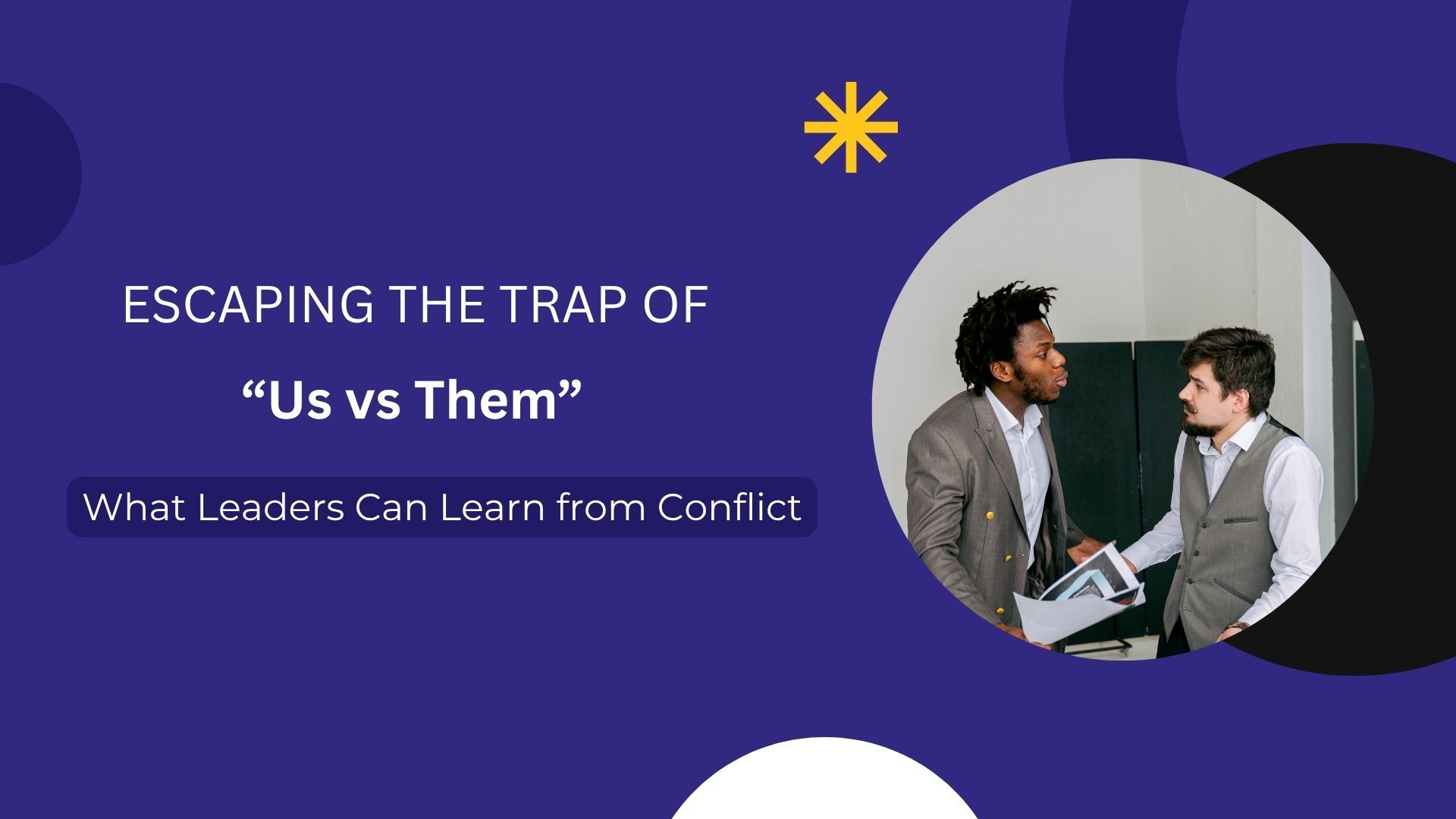Escaping the Us vs Them Trap
Oct 19, 2025
Have you noticed how quickly a disagreement at work can spiral into an us vs them situation? It might start as a simple difference in opinion about strategy, resources, or even office space but before long, people start taking sides. The tension grows, and suddenly, collaboration turns into competition.
That’s exactly the kind of dynamic Amanda Ripley explores in her powerful book High Conflict: Why We Get Trapped and How We Get Out. She defines “high conflict” as the kind that becomes self-perpetuating where winning matters more than solving the problem. Sound familiar? It happens in politics, in families, and of course, in organizations.
Ripley’s research shows that once conflict becomes “high,” logic takes a back seat and emotions drive the bus. The problem isn’t disagreement itself. Healthy conflict is necessary for innovation and growth. The danger is when curiosity disappears and contempt takes over.
As leaders, we can’t avoid conflict, but we can learn to prevent it from escalating and more importantly, guide our teams out of it when it does. Ripley offers a roadmap that every leader can use, and here’s how to apply it:
1. Get Curious, Not Furious
From my perspective mastering this one is the key to better organizations. When someone challenges you, your instinct might be to defend your position or prove your point. But Ripley suggests a better approach: get curious. Ask questions instead of reacting. Let me say that another way…DON’T REACT. Put on your investigative reporter hat and let the questions fly.
Try:
- “Can you help me understand how you see it?”
- “What part of this matters most to you?”
Curiosity cools conflict because it shifts the energy from judgment to exploration. It tells the other person you value their perspective even if you don’t agree with it.
2. Spot the Fire starters
Every high conflict has people or patterns that keep fueling the flames. In organizations, that might be gossip, email wars, or unresolved resentment. As a leader, pay attention to these triggers and step in early. Create healthy channels for communication before frustration festers.
Try: setting team norms like, “We bring concerns to the person involved before discussing them with others.” Sounds simple, but it builds accountability and trust, and I promise you it works when you get your team to buy in. Warning, it doesn’t happen overnight. It took me several years to get most of my team to do this. There always seems to be one who refuses but once you have the majority doing it, they start to police it.
3. Build “Conflict Entrepreneurs” into Coaches
Ripley describes “conflict entrepreneurs” as those who thrive on drama, the people who escalate conflict for attention or influence. You probably have one on your team (or have worked with one.) Instead of ignoring them, redirect their energy. Give them responsibility for solving problems, not spreading them. Invite them to help improve communication or lead a collaboration project. Channeling their drive into something productive can transform their impact.
4. Create a Path Back to Connection
When teams get stuck in opposition, remind them what unites them. Shared goals, core values, and the mission of the organization can become the bridge back to common ground. You might say, “We all care about this program’s success. Our approaches are different, but our goal is the same.” That reminder resets perspective and helps people move from personal conflict to collective purpose.
Conflict doesn’t have to be the enemy. In fact, when handled well, it’s the birthplace of creativity, innovation, and stronger relationships. But as Ripley reminds us, when it turns “high,” we lose our way and that’s when great leadership matters most.
As a leader, your job isn’t to eliminate conflict, it's to transform it. Stay curious, stay calm, and remember clarity and compassion are the antidotes to chaos.
I love helping leaders develop the courage and emotional intelligence to navigate conflict with confidence. If your team is stuck in tension and you’re ready to turn it into growth, let’s talk. Together, we can transform conflict into connection.